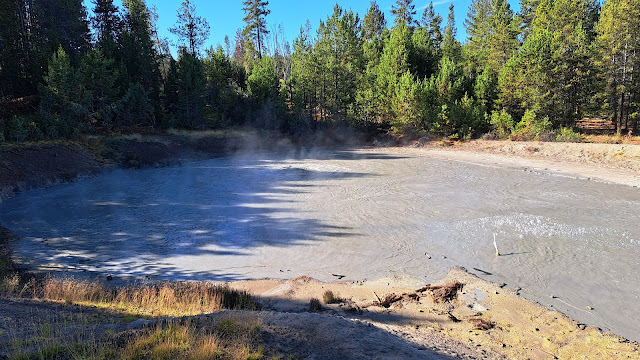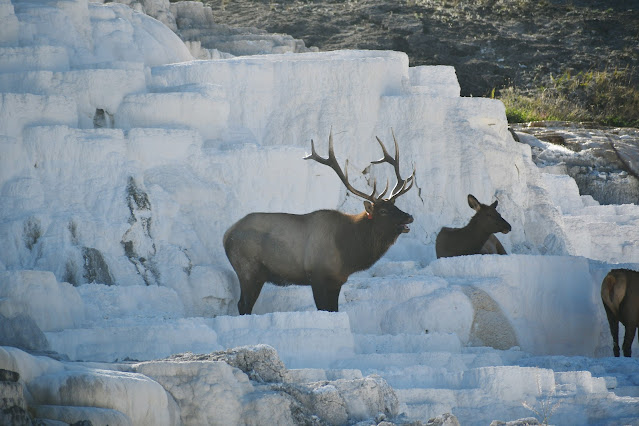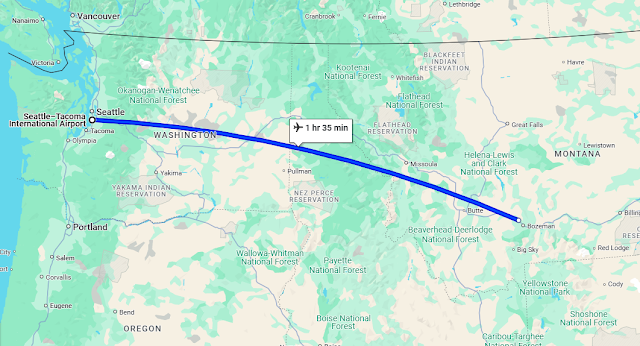We shifted our focus and continued following the winding Yellowstone River as it flowed upstream from Yellowstone Lake to the canyon. This led us into the expansive Hayden Valley, a broad floodplain that serves as a vital ecosystem.
The morning air remained crisp and chilly, causing steam to rise dramatically from the river’s surface. This ethereal effect was created by the blend of cold freshwater and warm geothermal inflows.
The Canada Geese appeared to be relishing the warmth of the geothermal-heated waters, leisurely paddling through the steam as they foraged for food hidden just below the surface.
As we continued tracing the path of the Yellowstone River upstream, we noticed numerous steam plumes rising unexpectedly from the landscape. Some emerged near the riverbank, while others billowed from deep within forested areas, highlighting the hidden geothermal activity scattered throughout the region. Just before rounding the bend into the Mud Volcano area, we spotted a massive plume of steam rising into the air, a striking sign that we were approaching one of Yellowstone’s more volatile geothermal zones.
The Mud Volcano area boasts a collection of intriguing geothermal features, all easily explored along a gentle one-kilometre loop trail. Informational boards at each stop provide fascinating insights into the unique characteristics and science behind every bubbling pool, steaming vent, and acidic mud pot.
Mud Caldron is a broad, shallow, and constantly steaming thermal pool that dominates the landscape right beside the parking area. Its churning, muddy waters immediately draw attention, setting the tone for the otherworldly geothermal sights to come.
Once the star attraction of the Mud Volcano area, Mud Geyser (above) was known for hurling mud up to 17 meters into the air. However, during the 20th century, its vent system became clogged with mud and gravel, bringing its dramatic eruptions to a halt. In recent years, though, signs of geothermal activity have gradually returned to the site.
Farther up the hill lies Churning Caldron, a large and active hot spring famous for its constantly bubbling, roiling waters. Despite its intense appearance, the agitation is not from boiling but from gases rising through underground vents, creating a dramatic and turbulent surface.
At the farthest point along the trail lies Black Dragon’s Caldron—a large, muddy, bubbling pool that, while more subdued than the energetic Churning Caldron, is significantly larger in size. This geothermal feature made a dramatic entrance in 1948 when it erupted through a fissure in the earth, splattering thick mud and toppling nearby trees.
Today, its waters flow into the adjacent Sour Lake (background).
This feature is the namesake of the entire area—Mud Volcano. Despite its dramatic title, it bears little resemblance to a traditional volcano. Instead, it resembles a churning, steaming mud pot.


















































